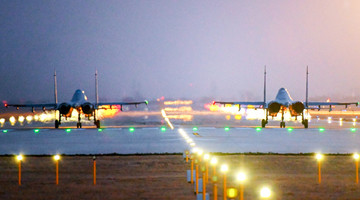By Li Shurui
On November 5, local time, the Yemeni government and the Southern Transitional Council (STC) signed the “Riyadh Agreement” in Saudi capital Riyadh on issues of power distribution and the building of a new government. Mohammed bin Salman Al Saud, Saudi Arabia's crown prince who attended the signing ceremony, called the agreement a “step toward ending the Yemen war through political efforts” that will kick off a new, stable period for Yemen.
Previously the UAE armed forces announced that their troops stationed at Yemen’s Aden Province had completed their military tasks and returned to UAE, then they had transferred the regional control to the government forces of Saudi Arabia and Yemen. According to Gao Shangtao, director of the Middle East Studies Center of China Foreign Affairs University, withdrawing its troops was in the national interests of UAE. On one hand, UAE has followed Saudi Arabia to interfere in the Yemeni situation for many years with little effect, and is therefore under heavy diplomatic pressure in the international community; on the other hand, the Houthis remains strong on the battlefield and may launch retaliatory attacks if UAE continues to send troops there. In general, the UAE has realized that the risks far outweigh benefits if it keeps on fighting the Houthis, and troops’ withdrawal was a reasonable choice to make.
UAE’s engagement won’t solve any problem, and the purpose of withdrawing the troops is to solve the civil conflicts in Yemen through political mediation, said Yu Guoqing, a researcher at the Institute of West-Asian and African Studies, Chinese Academy of Social Sciences. Unlike Saudi Arabia, UAE doesn’t border with Yemen, and its focus is on stabilizing southern Yemen through the Southern Transitional Council, so as to ensure the safety of its trade routes along the Yemeni coast. As the Yemeni legitimate government and the Council are to jointly form a new government soon, obviously pulling the troops out can better serve UAE interests.
Gao held that other countries that have a hand in Yemen’s civil war will follow the steps of UAE too, especially Saudi Arabia that had been attacked by the Houthis in revenge several times. While Saudi’s inland airport and oil refining and transmission facilities were precisely hit by the Houthis, and the Saudi-backed Hadi administration doesn’t have the upper hand in domestic warfare, it has planned to back out. Once foreign troops leave the country, the Houthis may resume its advantages in Yemen.
Gao also believed UAE and Saudi Arabia will manage to bridge the gap between the Hadi administration and the UAE-backed Southern Transitional Council before they pull out, and combine them into a relatively unified southern political force that stands a better chance against the Houthis in the north. It’s clear that Saudi Arabia’s coordination and mediation was an important contributor to the successful signing of the “Riyadh Agreement”.
In Yu’s opinion, the agreement has some positive effects on the Yemeni situation, but its execution is still questionable. According to the agreement, Yemen’s military establishment will be under the central administration of its Civil Affairs Department and Defense Department, but it’s unclear whether the armed forces of different factions under the Southern Transitional Council will be willing to be “re-organized” by the government troops or not.
The Saudi-led united forces stepped into Yemen’s civil war in 2015, but the four-year-long war hasn’t reached its original goal at all and Yemen remains chaotic as ever. The withdrawal of UAE forces and signing of the “Riyadh Agreement” were the latest changes in this protracted war, but where they will take Yemen is to be observed.









